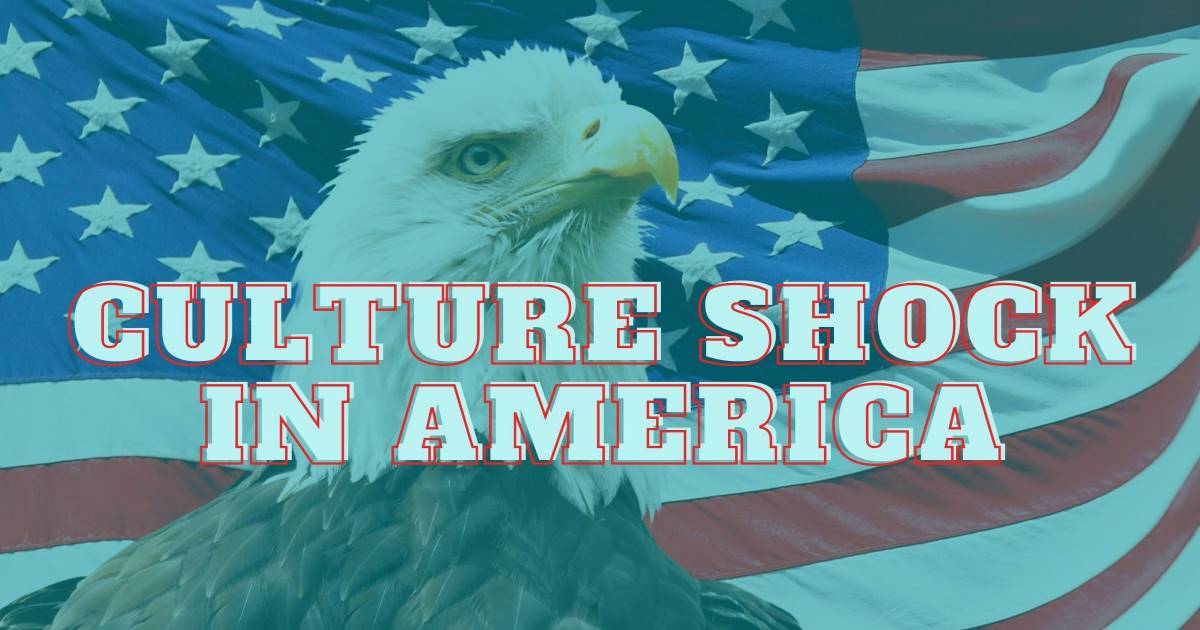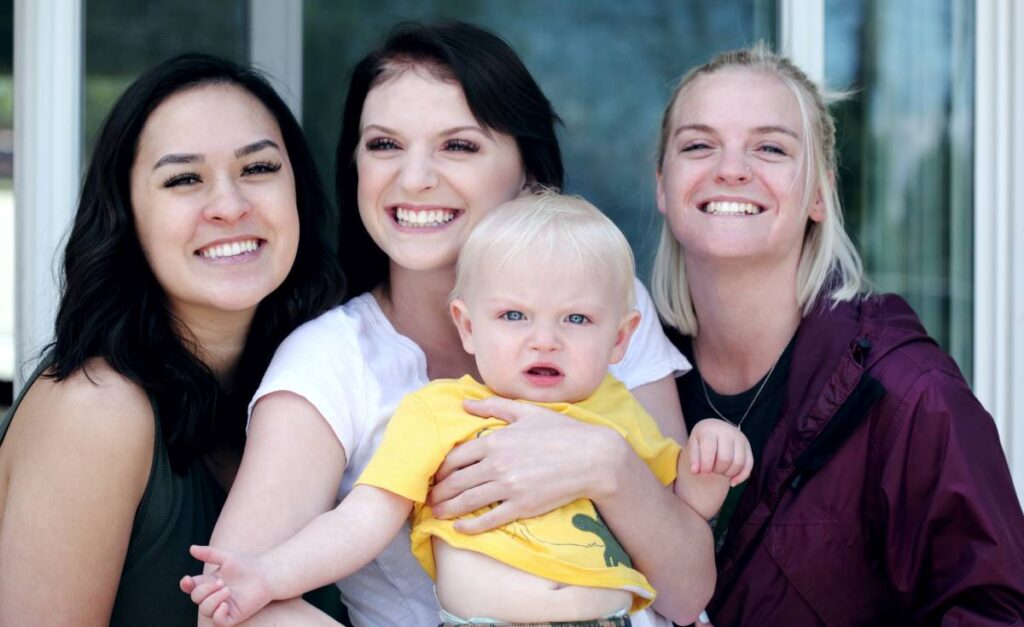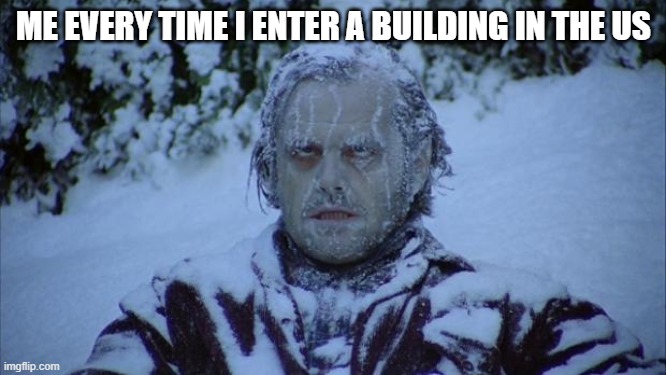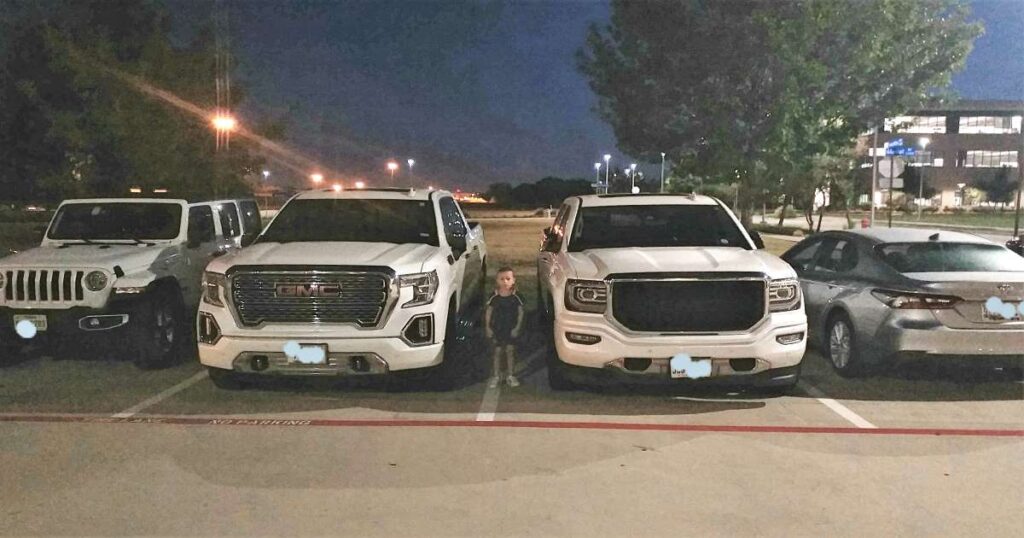40 Culture Shock Examples in the USA for Europeans

What is culture shock?
Culture shock is a feeling you may have when you move to a different environment. The experience of culture shock is the sense of disorientation a person may feel when experiencing an unfamiliar way of life. It can happen due to immigration or a visit to a new country, such as the USA. Culture shock can manifest in different ways. Culture shock in America can happen as you witness Americans communicate with each other, or even experiencing everyday things like foods in grocery stores and public transport.
When I first faced culture shock in the United States of America
I was born in Hungary and spent most of my life there and in other parts of Europe. My husband is American. When I first traveled to the United States of America, I was surprised by many different things. I found the banalest notions unusual. I laughed or frowned at the most everyday situations. In brief, I encountered culture shock experiences in the USA.
Examples of culture shock in America
1. Friendliness
The first astonishment coming to America is how friendly people are. Enter a store or restaurant, and the employees will smile at you. You can feel this geniality at school, work, the pool, and wherever else you spend your time. This extreme friendliness to customers can make foreigners uneasy, and sometimes it can be too much.
2.Positive vibes
It wasn’t really a culture shock, but a pleasant surprise noticing was how positive people were. In Hungary, people tend to be pessimistic, however in the USA, people would say “Go for it”, which I found very invigorating.
Also, it was easy to make friends. Americans appear to assume you are a nice person. In Hungary, people are suspicious of new arrivals.
3. Bright smiles
It follows from the previous one, but Americans have huge smiles on their faces. Foreigners quickly realize that Americans don’t smile only when they are happy, but all the time. And their pearly white teeth are so enviable.

4. Small talks
I know I sound like a broken record when I criticize Americans for talking to strangers. My husband, after living in Europe for almost a decade, still makes polite remarks to strangers. And Europeans still look at him like he had two heads. We just do not exchange pleasantries in the old Continent, and it seems very strange when a foreigner does it.
On the one hand, I actually respect that the Americans go all out to leave good first impressions and talk to strangers. On the other hand, it is one of the biggest culture shocks in America as a European.
5. Hello, howdy, how are you?
During my English (as a second language) classes at school, I learned that ˝How are you?˝ is a polite expression to inquire about someone’s health and well-being. Later, it took me a while to realize that when the Americans ask this question, they are not actually asking how you are. It is just a greeting phrase. Well, duh.
I am aware that I sound dumb that I didn’t know such a simple thing. But in fact, culture shock can materialize in everyday things like this. It is really confusing that in Europe when somebody asks you how you are, they are genuinely interested in knowing if you are well. Whereas in the States, it is just a way of saying hi.
6. Cold, cold mart
The excessive use of A/C in stores and other public places is beyond my comprehension. I have only been to the southern parts of the US, where the weather ranges from pleasant to sweltering. However, the arctic temperatures of malls, stores, and restaurants are prevailing in them. You sweat like a pig as you walk around in Arizona on a summer day then you enter a building, and your perspiration freezes onto your skin. Why is there such a big difference between inside and outside temperatures? WHY?

7. Cold, cold draft
First, the refreshments are ice cold. I don’t know, the refrigerators must have different settings. Then, there are these massive ice-floes in the beverages, which are larger in volume than the drink itself. I can’t taste my beer or soda. It is also unpleasant, and it hurts my teeth.
8. Poverty
During my time in California, I was shocked to see that popular places like Hollywood were ridden with the homeless. Then I traveled across Arizona, and I was horrified to see that there were places that looked like a third-world country. Half-collapsed houses, people with filthy clothes, buying groceries with food stamps, handwritten notes on lamp posts begging for cash for diabetic strips. Just terrible poverty. It is a humanitarian crisis, but what is more disturbing is that nobody seems to care. It is frightening to see there is no social system to deal with such problems.
As someone coming from a country whose GDP per capita is less than a quarter of the USA, I can’t believe the sheer volume of homelessness and poverty in the USA.
9. The disparities
On the other end of the spectrum, there are these ridiculously affluent people. A block away from mobile homes, they live in mansions. Opposite the dollar store, they sip on their gluten-free craft chocolate stout.
My husband grew up in California, in a town that was a small community back then, but now is an upscale neighborhood. We visited there and were astonished that we saw more Porsches than in the Porsche Museum in Germany. $100k cars on every driveway. I keep nagging him to move back after retirement, but he thinks his childhood town is a way too posh area now, and our children would have twisted values growing up there.
Again, for someone from a post-communist country, these tremendous inequalities cause the feeling of culture shock in America. The net worth of the richest person in Hungary is one-tenth of what Elon Musk lost one day because of a poorly worded tweet. On the other hand, the proportion of homeless people is 0,17% in the USA versus 0,0009% in Hungary. It is a 200-fold difference, based on data found here and here.
10. The diversity
Apart from the massive financial gaps in society, the diversity in this country is fascinating. In my opinion, this is the foundation of what makes America…err great? Well, racial, cultural, linguistic, social, historical diversity is what makes America America as we know it.
11. Land of the free
Immediately after the 9/11 attacks, Romanian publisher Cornel Nistorescu penned a pro-America editorial. The excerpt studies why the Americans are so united.
˝They speak all the languages of the world and form an astonishing mixture of civilizations and religious beliefs. On 9/11, the American tragedy turned three hundred million people into a hand put on the heart. Nobody rushed to accuse the White House that they are only a bunch of losers. […] Instead, the Americans volunteered to donate blood and to give a helping hand. […] I watched the live broadcast for hours listening to the story of the guy who went down one hundred floors with a woman in a wheelchair without knowing who she was […] What on earth unites the Americans in such a way? Their land? Their history? Their economic power? Money? I tried for hours to find an answer, humming songs and murmuring phrases with the risk of sounding commonplace, I thought things over, I reached but only one conclusion… Only freedom can work such miracles.˝
Americans take their freedom for granted, but the Romanian publisher, and myself from his neighboring country, know what it is like when fundamental human rights are violated. We remember the totalitarian state because it occurred in our lifetime. Americans are very fortunate that they never had to experience what it is like to live in terror.
12. The home of the brave
On the flip side of the coin, the Americans’ love for their country can be scary.
Seeing that star-spangled banner yet wave everywhere is strange because, in Europe, people hardly ever put flags in their front yards.
The flag salute in school is another thing I can’t comprehend. I couldn’t believe my ears when I heard that kids recite the Pledge of Allegiance every morning.
For someone from a country with a history that made it necessary to reflect critically on nationalism, American patriotism is disturbing.

13. Assault weapons
Talking about freedom, the Second Amendment solidifies one of the most fundamental freedoms of America— the right to keep weapons.
˝A well regulated Militia, being necessary to the security of a free State, the right of the people to keep and bear Arms, shall not be infringed.˝
https://en.wikipedia.org/wiki/Second_Amendment_to_the_United_States_Constitution
For me, the idea that someone around you might have a rifle is scary. In Europe, I’ve never seen any shops selling weapons, and I have no idea where I could buy a firearm in my home country. Consequently, school shootings are unheard of, and household gun accidents are non-existent.
14. Thank you for your service
The United States of America accounts for about 40% of global military expenditures, outspending the following 11 countries combined. Most of them are US allies.
Even so, no discussion of cutting government spending ever includes a reduction of military force.
15. Ignorance or arrogance
OK, I will be unpopular with this one.
But I can’t disremember the questions about Hungary I got from Americans, and I had to answer:
- Are you Russian? (Million times)
- What language do Hungarians speak? (Zillion times).
- Hungarian? Oh, but it is like Russian, isn’t it?

The list could go on, but you probably get the gist. It is baffling how much these questions lack any grasp on reality. I could never help cracking up when I heard them, and my husband always felt offended that I ridiculed his countrymen.
Then we have always had this argument whether these absurd questions are because of ignorance or arrogance. We usually agree that it is a little bit of both.
BUT: Anyone can ask stupid questions about a foreign country. I probably have also done it before, without even noticing. This is one way to learn about a different culture and a way of connecting to other people.
16. Or I’ll sue you
A significant culture shock in America for me was to hear how easily you can be sued in this country over pointless issues.
I think the suing culture arises from the American business practices. Businesses are less regulated in the US than in Europe, which promotes growth but can also cause problems. Since there is relatively little protection for consumers or workers, the only adequate step is litigation after the incident.
This can be exacerbated by laws that allow lawyers to work for a percentage of the award. It is practically unheard of outside the US. This encourages a lot of long-shot lawsuits with a low chance of success but possibly high payoff.
The threat of litigation encourages businesses to self-regulate.
17. Political (over)correctness
In a country of frivolous lawsuits, people must be careful about what they say or do. Being PC is essential.
And no, I am not going to condemn ˝cancel culture.˝ Treating people with respect and eradicating offensive terms can only be good things.
I am talking about warping the way we speak to avoid offending people. My favorite examples are CE/BCE and Happy Holidays.
˝CE˝ and ˝BCE˝ are the alternate expressions for AD and BC. AD stands for Anno Domini (in the year of the Lord), while BC stands for ˝before Christ.˝ CE stands for ˝common era˝, while BCE stands for ˝before the common era˝.
An important reason for adopting BCE/CE is religious neutrality. In my opinion, since the entire Gregorian Calendar is Christian in nature anyway, it is unproductive to conceal that fact.
The phrase ˝Merry Christmas˝ has been around for a long time. Recently, more and more people have found the term offensive due to the lack of inclusiveness of other holidays celebrated around this time of year. To be more inclusive, people have started using the phrase ˝Happy Holidays.˝
For me, the atheist, and for many others, ˝Merry Christmas˝ is just a traditional saying. Most of us do not mean any disrespect by it. The point of a holiday greeting is not about guessing the correct holiday that someone is celebrating or assuming their religion. It is about celebrating the simple act of spending time with family and friends.
18. Churches, churches
It is offensive to use Judeo-Christian vocabulary, but the country is surprisingly religious. Even outside the Bible Belt, weekly attendance in a church is a thing.
I was asked several times by Americans about which church I attended. I felt that was weird. No one has ever asked me that in Europe.
Another awkward situation is when people say ˝I’ll pray for you˝. I know that they mean it well, but I do not pray, and honestly, I have no idea how to react to that.
19. Let’s just sugar coat it!
This paragraph isn’t about American friendliness again. It is about the actual sugar coating on EVERYTHING.
At a regular hotel breakfast, there are fruit loops, sugary drinks, sugary spreads, sweet bagels. I swear that white bread also tastes sweet.
American sourdough is the closest to what I know as actual bread.
As a vegan and diabetic, my usual breakfast choice at an American hotel is… no, not plain water. It’s scrambled eggs. While eating an animal-based diet is wrong, in my opinion, a couple of eggs won’t kill me right on the spot, unlike frosted flakes.

20. More whining about unhealthy food
In Europe, the cheapest eating option is to cook from scratch.
At the beginning of our relationship, my husband used to ask joyfully at the dinner table, “Did you cook this?” And I used to look at the easy soup and answer, “Yeah, you know, from ingredients.”
In the USA, cooking might not be your best bet. It is beneficial if you want to remain healthy, but fresh produce is expensive.
A trip to Trader Joe’s can break the bank, but, on the other hand, fast food chains offer ridiculously cheap meals.
21. Tipping culture
Speaking of which, there are other customs in restaurants I just do not understand. The American tipping practice is such a culture shock. The wages of food service workers are so low that they must receive gratuities to survive.
I used to work in catering (in Europe), but I think it is wrong. Restaurant owners should pay livable wages to their employees instead of forcing them to live on tips.
22. Coffee
It might sound ridiculous, but for me, this is one of the most unpleasant things in the USA.
I can’t function without a proper espresso. I always start with my mornings with strong coffee.
In the US, however, there is just about everything but that. See-through coffee, frappuccino, decaf coffee…etc. They give me a headache.
23. If you don’t have insurance, can you kindly perish quietly?
When my son was born in Germany, another (American) lady in the mama group became ecstatic when she heard the hospital birth would cost her only around €5000. She couldn’t believe she could get off so cheap.
Do you know how much Germans pay in cash for a hospital birth?
€0.
In case, of course, the lady has worked before or has a family member (husband) who works. It means she has health insurance which covers the costs.
That is what insurance is for. That is what society is for.
24. Short maternity leaves
After paying a fortune for the most elemental and painful process in existence, American women have to go back to work. Six weeks after giving birth, it is time to punch in.
That is insane.
Your body is still sore, your newborn wakes up every 3 hours, you are a mess, your house is a mess, and you have to perform whatever task is your job for 8 hours.
It is so shocking that it is just beyond my comprehension.
On the other hand, Americans find it weird that maternity leaves can be up to 3 years in some European countries. In some places, also dads can take it.

25. Confusing imperial system
Europeans are accustomed to the metric system: kilograms, meters, liters, degrees Celsius as the unit of weight, length, volume, and temperature. So it is quite a culture shock to see a different system in the USA.
Here pounds, feet, and Fahrenheit are usually used as units for measurements. This system is quite confusing at the beginning for foreigners in the USA.
Interestingly, the metric system was developed by scientists, whereas the imperial measurement system was made up by emperors, measuring their own feet.
26. Vast distances
The distances in such a large country are hard to comprehend. People in the US commute for hours every single day. In Europe, an hour-long drive is a road trip. It is also confusing that distances are calculated in miles. I guess an 80-mile drive doesn’t sound as scary as a 130-kilometer trip.
27. The variety of landscapes
Going on a road trip in the US is like teleporting. You doze off in the passenger seat, and when you wake up, you have arrived on another planet.
When we drove from the desert in Phoenix (AZ) to the ponderosa pine tree forest near Flagstaff, my awakening kids thought we somehow had driven to Germany.
28. VERY cheap gas
At the time of writing, the consumer price of regular gasoline in Germany is more than double that in the USA. (The national average for a GALLON is $3.415 in the US, and it’s 1.7 € per LITER in Germany.) After the initial confusion of changing between currencies and measurement systems, it is a significant difference. It is most notably caused by the differences in taxes on gasoline.
29. Big trucks
The biggest culture shock in America for my children (two young boys) was the size of cars. When we are in the USA, they are excited merely by looking at all the monster trucks that drive by. (Which are, ironically, just regular personal vehicles.) I personally think that the sheer size of American trucks and SUVs is preposterous.
However, if you look at the gas prices, driving around with tanks becomes almost logical.

30. Big passengers
The massive infrastructure for driving removed most physical activity from Americans’ daily routine. Thus, their growing BMIs have been the subject of mockery for decades.
There are indeed many obese people in the US, but actually, fewer than I expected. After what I saw on television, I expected morbidly obese people in wheelchairs everywhere. If I look around in my home country, Hungary, or my current place, Germany, the proportion of overweight people does not seem less than in the US.
It is a global phenomenon that we got as used to as the metaphorical frog in the boiling water.
When I was in my teens, I used to wear size S/M. Now, in my 40s, I am some 15 kilos (30 pounds) fatter, and I still wear size S/M. Clothing companies adjusted their sizing, so we don’t feel that bad about our globally expanding waistlines.
31. Enormous, massive, excessive, humongous
Besides the trucks, the size of everything is surprisingly large.
Perceiving the sheer size of the same object is a prime example to introduce culture shock in America.
When a Texan friend visited us, she noticed: “Everything is so small in Europe.”
“Nah, it is the other way round. Everything is so big in America.”
She thought that our home was cute and cozy. Of course, houses are a lot larger in Texas than in Germany. On the other hand, I feel that a duplex is a bit cumbersome for our family of four. It involves too much cleaning, too much climbing the stairs. Of course, I grew up in a 55 square meter apartment (sorry, 590 square foot flat.)
32. The vocabulary
I should have written ˝apartment˝ in the previous paragraph because ˝flat˝ is a British English word.
Most students in Europe, myself included, learn British English at school. Then, in everyday situations in the US, these students get confused about word differences between American and British English.
While pronunciation and grammar are among the many differences between British and American English, perhaps the most difficult to navigate is the variation in vocabulary.
Generally speaking, most Brits will understand American English speakers and vice versa.
The differences can lead to funny stories like ordering chips at a restaurant when you mean French fries.
Sometimes they can also lead to life-threatening situations. I will never forget when I was showing my home town to American, as a tour guide.
At one point, I told the American driver to ˝follow the lorry.˝
Blank stare.
˝Follow the what?˝
˝Never mind, you should have changed lanes. Whoa!..Whoa!… You crossed the red lights!˝
At that moment, the word truck imprinted forever.
33. Shoes inside
Strangely, people wear shoes inside their homes. But it is just another instance of cultural differences. Americans (and Western Europeans) think it is weird that Eastern Europeans (and Asians) take their shoes off at home. On the one hand, according to Americans, it is dowdy to be barefoot. On the other hand, Hungarians think it is unhygienic to wear outside shoes at home.
34. First floor vs. ground floor
In Europe, the floor that is on the same level as the street is the ground floor. After that, we start counting, and the first floor is the floor above the ground floor. In the US, the numbers reflect the actual amount of floors. Thus, the first floor is where you enter the building, and then comes the second floor, and so on.
I think the American way makes more sense.
35. Taxes
The prices do not include tax, so you never know how much you are going to pay. It is quite confusing.
I understand that there is no general VAT in the US but various sales taxes, so there isn’t a single tax rate that shops could easily include in all prices. Thus, the seller lists how much sales tax is, so the consumer understands that it is not the sellers’ fault that the product costs 10% more than it needs to.
36. 24-hour stores
In Germany, in our little town, the stores, and even the gas station, are closed on Sundays. If you need things for Sunday, you have to prepare in advance.
In the USA, especially in big cities, you can get anything at any time of any day.
In this sense, the USA resembles East Asia.
For me, the customer, both of them have advantages and disadvantages. However, for retail workers, a well-deserved rest or family time on Sundays is remedial.
37. Driving everywhere, driving through everything
Americans live fast-paced lives. Most Americans own cars, and driving everywhere is how Americans get around. It also follows from the vast distances and that American cities are more spread out than the European ones.
The drive-thru liquor stores and Vegas weddings, albeit convenient, can be a real culture shock in America for Europeans.

38. Free refills
I don’t think I have ever seen free refills at a fast-food restaurant anywhere in the world. Getting refills at a sit-down restaurant is unheard of in most of the world.
39. High house numbers
In the United States, streets generally are not numbered beginning with 1 at one end, and then increased by 1—depending on the even or odd side of the road.
Instead, most cities and counties are laid out on a grid system.
The street numbers are calculated as a distance from a zero point in the center of the city. For example, 4200 South Avenue might indicate that the address is 4.2 miles south of the zero point.
40. The gap in the toilet doors
Just why? WHY? WHYYYYY?
INSPO:
https://everything-everywhere.com/7-things-that-are-awesome-about-america/
7 Traditions Only Americans Can Understand (theculturetrip.com)
https://matadornetwork.com/life/10-embarrassing-american-stereotypes/
https://www.buzzfeed.com/morgansloss1/things-non-americans-love-about-the-us
https://www.interexchange.org/articles/career-training-abroad/10-things-to-know-about-u-s-culture/





The title is very misleading: I was expecting a post on….America – but if I’m not mistaken, this is dealing exclusively with the US?! America consists of 57 countries….
Thank for the feedback. The title is literally 40 Culture Shock Examples in the USA for Europeans.
This is all spot on haha I love reading culture shock in America posts because they’re always so accurate. That being said… as far as the “political correctness” – the photo you used in #33 is very controversial. It was taken the day of the insurrection at the capital of the United States. The man in the photo was one of the insurrectionists that broke into the capital – he is sitting at house speaker Nancy Pelosi’s desk rifling through her things while others called for her head in the halls. So just FYI you mightttt want to use a different picture. Loved your post though!
Hey, thanks, you are right, I was hesitant to use the pic, but I ended up using it exactly because it is so controversial. But I don’t want to offend anyone, so I’ll just remove it.
Yep this is spot on! I’m an American born child of immigrants and third culture kid who has lived in several places so I have a foot in each world and you nailed it